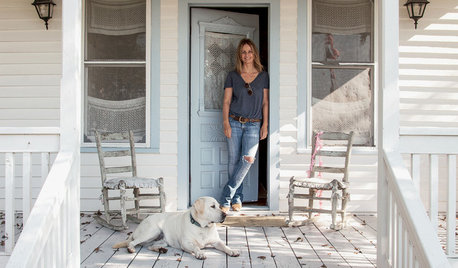Now THIS is 'evolution'...
pskvorc
9 years ago
Related Stories

MOST POPULARKitchen Evolution: Work Zones Replace the Triangle
Want maximum efficiency in your kitchen? Consider forgoing the old-fashioned triangle in favor of task-specific zones
Full Story
DECORATING GUIDESDesign Lessons From a Stylishly Evolving Home
Create a fresh take on your existing space with inspiration from a Canadian designer's own home evolution
Full Story
HISTORIC HOMESWright Sized in Alabama: The Rosenbaum House
Get lessons in Usonian living from the design and evolution of a historic Frank Lloyd Wright home
Full Story
TASTEMAKERSCatching Up With the Queen of Shabby Chic
Rachel Ashwell defined a style embraced by countless fans over the past 25 years. Find out what she’s turning her sights to now
Full Story
ARTShow News: Rare Quilts Get Museum Time
See 6 intricate designs from a California exhibition and get tips for building your own quilt collection
Full Story
FURNITUREArmoires Travel From Ancient Rome to High-Style Storage
Go ahead, be possessive — this beautiful furniture piece with a rich history gives your treasures a proper home
Full Story
HOUZZ TOURSHouzz Tour: Cozy and Playful in Cape Cod
Casual comfort meets whimsical architectural features in this Massachusetts vacation home with eye-popping views
Full Story
COMMUNITYTour a Pioneering Beach Town That Fosters Community
No cars, mixed-use zones, strict building codes ... a new book takes us inside Seaside, a champion of New Urbanism
Full Story
ARCHITECTUREHouzz Tour: Towering Above London in a 7-Story Home
Maximizing see-forever views, the U.K. couple who converted this water tower are aiming high
Full Story
Coed-Cave: A Man Cave for the Masses
Enjoy March Madness Surrounded by Color, Art, Light — Even Flowers!
Full StoryMore Discussions






barbararose21101
merrygardener
Related Professionals
Waterbury Landscape Contractors · Bedford Heights Landscape Contractors · Chelmsford Landscape Contractors · Hicksville Landscape Contractors · Lantana Landscape Contractors · Las Vegas Landscape Contractors · Manhattan Landscape Contractors · Methuen Landscape Contractors · Oklahoma City Landscape Contractors · Pacifica Landscape Contractors · Anchorage General Contractors · Fairview General Contractors · Henderson General Contractors · Montclair General Contractors · Winfield General Contractorsmendopete
equinoxequinox
pskvorcOriginal Author
nexev - Zone 8b
pskvorcOriginal Author
nexev - Zone 8b
Niivek
nexev - Zone 8b
pskvorcOriginal Author
FrancoiseFromAix
nexev - Zone 8b
Niivek
hummersteve
nexev - Zone 8b
barbararose21101
equinoxequinox
nexev - Zone 8b
chuckiebtoo
nexev - Zone 8b
FrancoiseFromAix
nexev - Zone 8b